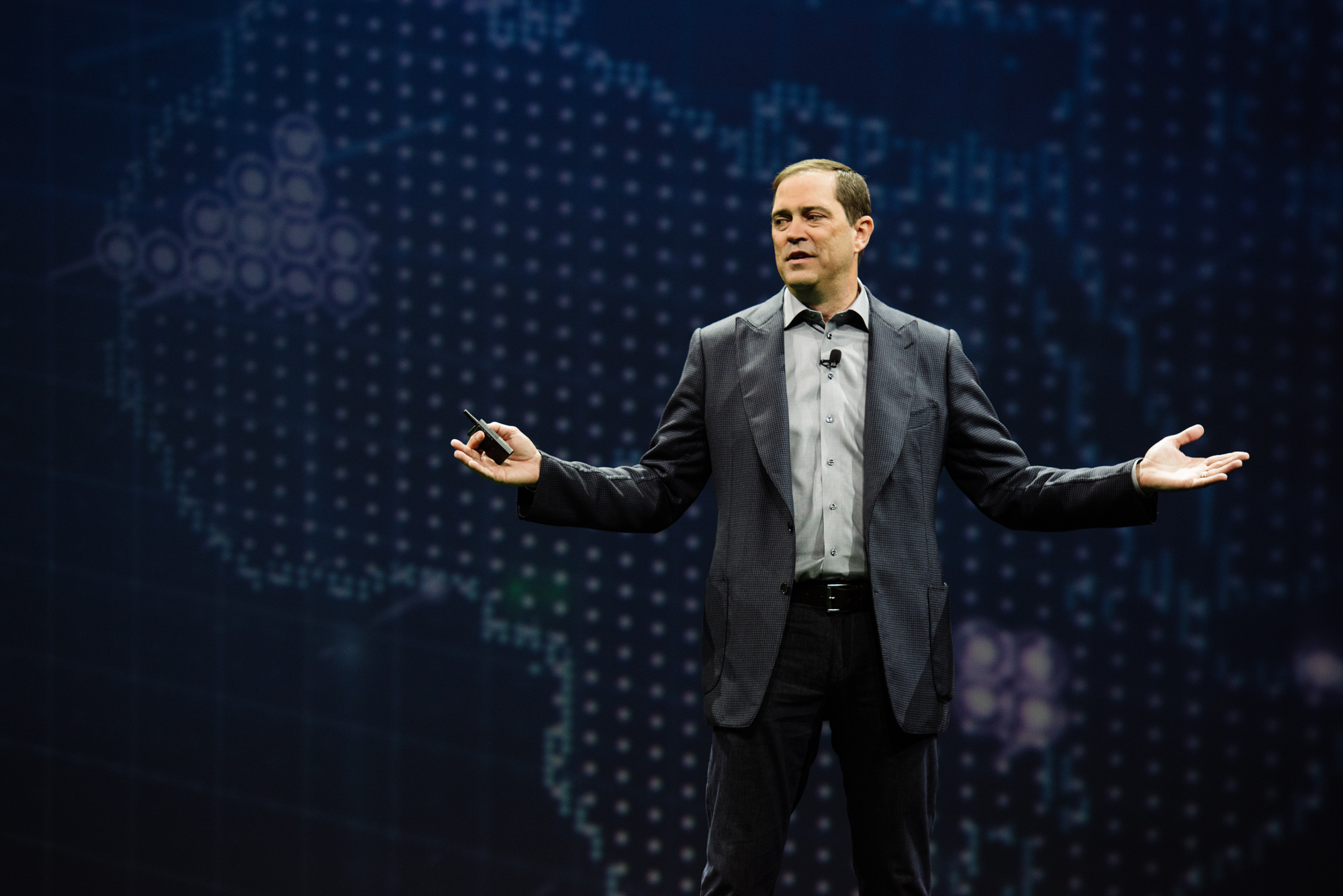 INFRA
INFRA
 INFRA
INFRA
 INFRA
INFRA
Cisco Systems Inc. saw its stock fall in after-hours trading today despite posting second quarter financial results that beat Wall Street’s expectations. The numbers highlight ongoing struggles in its main infrastructure business and lower than expected sales in other segments.
Cisco, which sells networking equipment, security software and video-calling tools, reported earnings before certain costs such as stock compensation of 79 cents per share. Revenue for the quarter came to $11.96 billion, down slightly from $12.01 billion one year ago.
Wall Street had forecast a profit of 76 cents per share on revenue of $11.92 billion.
Cisco Chief Executive Chuck Robbins (pictured) insisted that the company was seeing “encouraging signs of strength” that show how its technology will be a powerful engine for customers’ recovery and growth. “Our team delivered a strong performance as we partnered with customers on accelerating their digital transformation and driving secure, remote work,” he said in a statement.
However, the numbers show that Cisco’s overall revenue has declined for five consecutive quarters now, with the weaker COVID-19 pandemic-hit economy hurting sales as customers opt for more cloud services instead of on-premises infrastructure to support employees working from home.
Cisco’s main business segment, Infrastructure Platforms, which includes its networking routers, switches and servers, pulled in revenue of $6.39 billion, down 3% from a year ago but above Wall Street’s forecast of $6.23 billion. Switch revenue was flat, while routers and servers declined.
Cisco’s Applications unit, which includes its Webex video-calling service, reported $1.35 billion in revenue, flat from one year ago and below Wall Street’s estimate of $1.4 billion. Robbins said Webex has at least grown its user base, with an average of 600 million users during the quarter.
“I think over the next year you’ll see that portfolio will continue to improve, and I think we have a chance to take share back,” Robbins said. Webex faces some tough competition in the video calling market, with companies such as Google LLC, Microsoft Corp. and Zoom Video Communications Inc. among its main rivals.
Elsewhere, Cisco reported Services revenue of $3.39 billion, up 2%, but below Wall Street’s estimate of $3.41 billion. Within this segment, Robbins said the company was seeing some strong momentum with web-scale customers that operate large data centers. Around a quarter of its revenue in this segment came from those clients, he said.
Analyst Patrick Moorhead of Moor Insights & Strategy said this was a very encouraging sign, the fifth successive quarter of rapid order growth from web-scale customers, rising to triple digits. “This is important as these customers had walked away in many parts from Cisco, opting for their own designs,” Moorhead noted.
Also encouraging was Cisco’s Security sales, which came to $822 million for the quarter, up 10% from a year ago. However, that was still short of Wall Street’s forecast of $833.4 million.
For investors, the positives were outweighed by the negatives, and Cisco’s stock fell more than 5% in after-hours trading.
“Investors aren’t too thrilled right now as its trading down after-hours, but I attribute this to its recent run-up and ‘selling on the news’ philosophy,” Moorhead said. “We’ll see if this translates to tomorrow’s opening. I doubt it.”
Overall, Moorhead said he was encouraged by Cisco’s strength in its Cat 9K, data center switching, security, wireless and Webex numbers.
“In a very rough period for infrastructure providers, I believe Cisco proved its resilience by balancing infrastructure against software, security and collaboration businesses,” he said.
Analyst Holger Mueller of Constellation Research Inc. also saw some encouraging signs, saying that Cisco seems to be turning the corner, which typically starts by keeping by revenue constant and improving profitability.
“Cisco has managed to do both, and while its infrastructure business shrank, its security business was able to make up for it,” Mueller said. “It’s a similar story on the regional side, with North America shrinking and Asia and Europe making up for it. But it will be easier if Cisco could start the growth engines of its infrastructure business again.”
That may well happen soon enough. During the quarter, Cisco increased its offer to buy the networking hardware firm Acacia Communications Inc., from $2.6 billion to $4.5 billion. The new offer was promptly approved by Chinese government regulators, and the deal is now likely to close sometime this quarter, subject to approval by Acacia’s shareholders.
Acacia is seen by analysts as an important buy for Cisco, since it will provide an important new source of revenue growth in its infrastructure business. Acacia sells specialized chips for powering fiber optic network equipment, as well as silicon photonics chips that turn electrical data into light and vice versa. The big advantage of Acacia’s chips is that they require less space and power than some of the legacy systems historically used to manage data in optical networks and, as a result, they’re seeing strong demand from customers.
Also in the quarter, Cisco announced a couple of smaller acquisitions: events and logs analytics startup Dashbase Inc. and Slido s.r.o., a startup that helps companies provide a better experience for audiences attending online events such as virtual conferences and webinars.
The company also announced some major updates for Webex, which gained more intelligent call features and real-time translation capabilities, as well as third-party tool integrations.
For the third quarter, Cisco said it’s expecting a profit of 80 to 82 cents per share, with revenue growth of 3.5% to 5%. Wall Street had earlier forecast a profit of 81 cents per share on revenue of $12.35 billion, which would amount to revenue growth of 3%.
THANK YOU